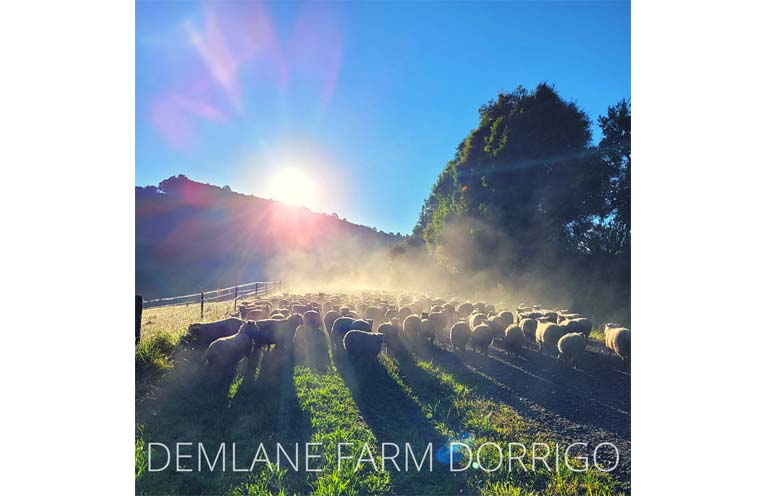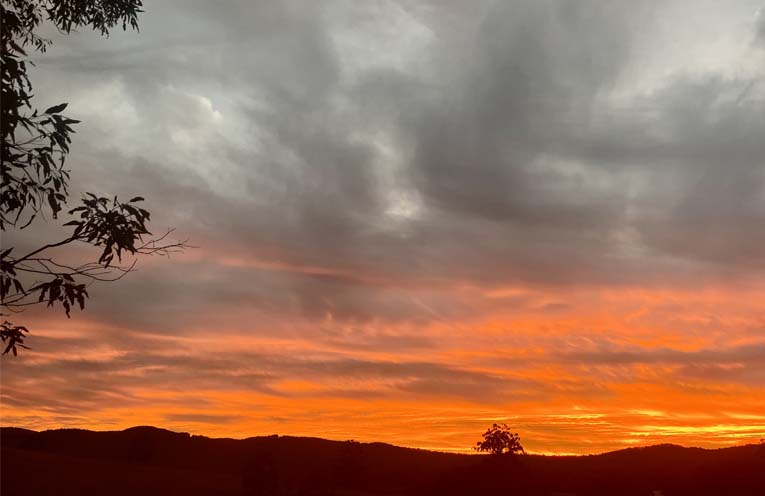
RED SKY season means some spectacular skyscapes to feast upon at dawn and dusk, something the Bureau of Meteorology (BOM) is helping us understand through the old saying, ‘A red sky at night is a shepherd’s delight.
A red sky in the morning is a shepherd’s warning’.
It’s a saying that comes in a few variations.
Since biblical times and probably before, proverbs and folklore such as this developed as a way for societies to understand and foretell weather, said the BOM.
The ‘red sky’ proverb has endured across cultures for centuries, and modern science can explain why this is so.
What causes a red sky at sunrise and sunset?
The BOM explains.
The sun is low on the horizon at sunrise and sunset.
At these times of the day, sunlight has had to travel through more of the atmosphere to reach us.
When light hits the atmosphere, it is scattered, particularly when dust, smoke and other particles are in the air.
This scattering affects the blue part of the light spectrum the most.
So, by the time the sunlight reaches our eyes there is generally more of the red and yellow parts of the spectrum remaining.
Dust and smoke particles commonly build up in the atmosphere beneath high-pressure systems, which are generally associated with dry and settled weather.
In areas of the world where weather systems move routinely from the west to the east, including across southern areas of Australia, the ‘red sky’ proverb often holds true.
A red sky sunrise suggests that an area of high pressure and fine weather, with its trapped dust and other particles, has moved out towards the east.
This allows for an area of lower pressure and deteriorating weather, perhaps a cold front and band of rain, to move in from the west during the day.
On the other hand, a red sky sunset tells us the worst of the weather has now eased, with higher pressure and improving weather approaching from the west for the following day.
What often makes red sky sunrises and sunsets even more spectacular is the position of the sun in the sky, relative to clouds.
When the sun is low on the horizon, rays of light shine back up onto the underside of clouds high in the sky, reflecting back those bright orange and red colours that make it look as if the sky has turned to fire.
With a red-sky sunrise, the eastern sky is more likely to be cloud-free with finer weather, allowing the sun to shine upon the higher cloud moving in with the deteriorating weather from the west.
With a red-sky sunset, it’s the western sky that’s more likely to be clear, with the sun’s rays shining up onto clouds further east.
Michael Williams, farmer and owner of Demlane Farm in Dorrigo, is well aware of the ancient weather proverb.
“Dorrigo is blessed with pink sunsets for the cooler months of the year,” Michael told News Of The Area.
A shepherd, or sheep farmer, Michael’s farm raises sheep up on the Dorrigo Plateau that are bred for their meat quality, as well as growing a range of citrus.
From his rolling pastures he has a bird’s eye view of the sky and what it holds.
“The south-westerly lows that sweep across the continent in winter have already dropped any moisture and mean dry weather for us.
“Any wind and dust add to the pink glow so months of this weather can mean low water levels and poor pasture growth.
“Too much of a good thing,” he warns.
For more from the BOM blog visit https://subscribe.bom.gov.au/BOMBlog-sub/.
By Andrea FERRARI
